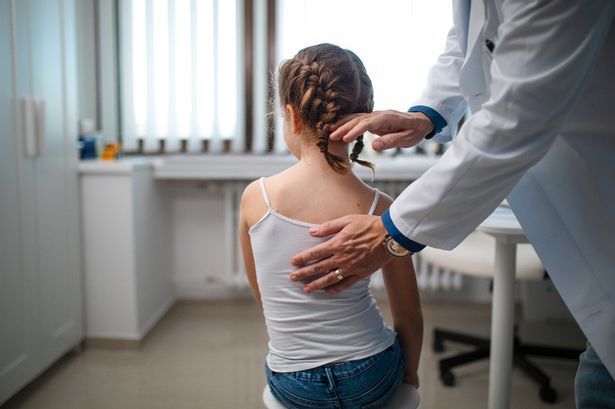Health
England Faces Measles Crisis as Vaccination Rates Plummet

A child suffering from measles and other health complications passed away earlier this month at Alder Hey Children’s Hospital in Liverpool, prompting urgent calls for improved vaccination efforts across England. In a statement, Alder Hey expressed its concern regarding the increasing number of children and young people diagnosed with measles. Since June, the hospital has treated 17 children for various effects and complications related to the disease.
Following this tragic incident, Wes Streeting, the Health Secretary, addressed Parliament, stating, “No child in this country should be dying of measles.” He emphasized the need to “redouble our efforts on vaccination,” highlighting the importance of the measles, mumps, and rubella (MMR) vaccine, which offers over 95% protection against the illness. Despite this, vaccination rates have significantly declined across England, with no council area reaching the crucial target of 95% vaccination coverage essential for achieving herd immunity, as outlined by the World Health Organization (WHO).
The situation is particularly alarming in 22 council areas, where the MMR vaccination rate has dropped below 75%. Meanwhile, confirmed cases of measles are on the rise, with 529 cases reported this year alone. Most of these cases involved children aged 10 and under, but infections have also been documented in young adults.
Among the hardest-hit areas is Hackney, located in Central London, which has recorded the lowest vaccination rate in the country. Only 60.8% of children in Hackney have received both doses of the MMR jab by their fifth birthday. This borough has reported 46 lab-confirmed cases of measles in 2025, making it the second highest in confirmed cases nationwide, just behind Bristol, which has 47 cases but a higher vaccination rate of 83%.
Other areas experiencing significant outbreaks include Leeds with 29 confirmed cases, Salford with 27, Birmingham with 26, and Newham with 24. Notably, none of the 13 hotspot areas with at least 10 confirmed cases have achieved a vaccination rate above 90%. In fact, fewer than 70% percent of children are up to date with their MMR vaccinations in four of the areas with the highest infection rates.
The MMR vaccine is administered in two doses, with the first given to infants at one year old and the second to preschool children around three years and four months. Approximately 99% of individuals who receive both doses are protected against measles and rubella, while mumps protection, although slightly lower, leads to less severe cases in vaccinated individuals.
For those who have not yet received the vaccine, it is never too late to catch up. Individuals of any age can contact their GP surgery to schedule an appointment for their MMR vaccination. The UK Health Security Agency (UKHSA) provides resources and information on measles, mumps, and rubella, encouraging comprehensive awareness and proactive health measures.
As the nation grapples with this public health concern, the need for renewed emphasis on vaccination becomes increasingly clear. With rising measles cases and declining vaccination rates, the collective effort to protect children from this preventable disease remains crucial.
-

 Entertainment3 months ago
Entertainment3 months agoAnn Ming Reflects on ITV’s ‘I Fought the Law’ Drama
-

 Entertainment4 months ago
Entertainment4 months agoKate Garraway Sells £2 Million Home Amid Financial Struggles
-

 Health3 months ago
Health3 months agoKatie Price Faces New Health Concerns After Cancer Symptoms Resurface
-

 Entertainment3 months ago
Entertainment3 months agoCoronation Street’s Carl Webster Faces Trouble with New Affairs
-

 Entertainment3 months ago
Entertainment3 months agoWhere is Tinder Swindler Simon Leviev? Latest Updates Revealed
-

 Entertainment4 months ago
Entertainment4 months agoMarkiplier Addresses AI Controversy During Livestream Response
-

 World2 weeks ago
World2 weeks agoBailey Announces Heartbreaking Split from Rebecca After Reunion
-

 Science1 month ago
Science1 month agoBrian Cox Addresses Claims of Alien Probe in 3I/ATLAS Discovery
-

 Health4 months ago
Health4 months agoCarol Vorderman Reflects on Health Scare and Family Support
-

 Entertainment2 weeks ago
Entertainment2 weeks agoCoronation Street Fans React as Todd Faces Heartbreaking Choice
-

 Entertainment4 months ago
Entertainment4 months agoKim Cattrall Posts Cryptic Message After HBO’s Sequel Cancellation
-

 Entertainment3 months ago
Entertainment3 months agoOlivia Attwood Opens Up About Fallout with Former Best Friend





















